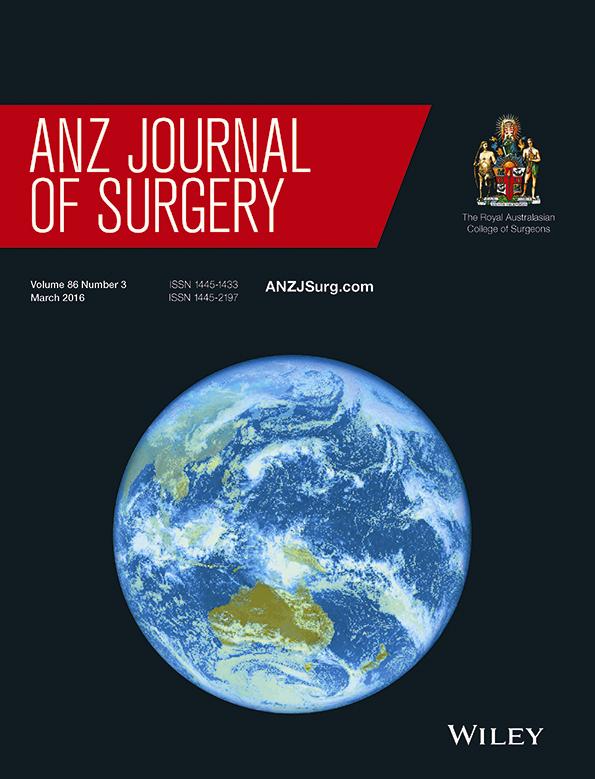Horses for courses but which horse for which course?
In comparison to other surgical specialties, the application of minimally invasive surgical approaches to hepatectomy has been slow because of technical issues associated with hepatic retraction, intra-operative visibility, vascular identification and control, and concerns over oncological safety. Laparoscopic hepatectomy (LH) was first undertaken in 19911 and has been shown to have a similar safety profile to open hepatectomy but has limitations of a steep learning curve, safe access to tumours adjacent to the hilum, vena cava, and hepatic veins, control of bulky tumours and tumours in a posterior location and the difficulty performing biliary and vascular reconstructions. Robotic hepatectomy (RH) was first described in 20032 and overcomes many of the limitations of a laparoscopic approach providing the surgeon with a three-dimensional image, a 360° range of instrument motion and improved ergonomics.
In the current issue of the journal, Lee et al.3 present their experience with both LH and RH and describe the good and some of the bad with each technique. The authors report 66 patients in 10 years undergoing LH and 70 patients in 4 years undergoing RH. The proportion of the total number of hepatectomies undertaken in their institution over this time is not stated. Overall, the outcomes in terms of blood loss, hospital stay and morbidity were favourable in both LH and RH with more major hepatectomies performed in the RH group by a factor of seven. The conversion rate was similar in both groups but it was noted that no conversions occurred in the last 50 RH, suggesting an improved ability to manage critical intra-operative events with growing surgeon familiarity with the robotic technique. However, the operative time for RH was significantly longer than LH (90 min – 7 h versus 90 min – 10 hours, respectively).
The question that arises from this work is which hepatectomies should be performed open and via a minimally invasive approach and, of these, laparoscopic or robotic? The Louisville consensus for LH indicates that this approach is best utilized with lesions ≤ 5 cm diameter and located in accessible segments 2, 3, 4b, 5, and 6.4 The majority of cases performed laparoscopically by Lee et al.3 were non-anatomical resections and left lateral sectionectomies while 20% of operations in the RH group were major hepatectomies suggesting that patients requiring major resections using a minimally invasive approach should be treated with RH particularly given the reduced conversion rate seen with RH.
Lee et al.3 also highlight the augmented dexterity enabled by endowristed movements, the software filtration of surgeon movement and the high definition three-dimensional vision provided by the robotic approach gives the surgeon a significant advantage in performing hilar dissections and other investigators have suggested that complex biliary anastomoses may be easier to perform utilizing robotic control and image magnification and that RH is associated with less chance of hepatic decompensation in cirrhotic patients than open hepatectomy.5
What is clear is that LH and RH take longer than open hepatectomy and have a higher cost both in terms of capital outlay, operative time and theatre resource. Even Lee et al.3 acknowledge that there was insufficient robotic theatre time to do all available cases. Most government health providers will fund one, perhaps two robotic or laparoscopic theatres per institution although privately funded providers might be more bullish. While it has been agreed that capital costs are partly offset by earlier return to work and productivity, government providers are not financially nimble enough to accommodate this and private providers generally cannot add ‘community good’ to their financial bottom line. In addition, the post-operative stay of 5 days, quoted by Lee et al. for robotic left lateral sectionectomy, is comparable to that achieved with an open approach utilizing an enhanced recovery pathway making the benefits of a laparoscopic approach harder to sell to funders, although hospital stay is not a particularly good metric of patient recovery.6
So which horse for which course? Open hepatectomy appears to be with us for the foreseeable future to manage tumours that are bulky and in difficult locations and to maintain the skillset to manage acute hepatic emergencies such as trauma. Many hepatobiliary units are utilizing the Louisville guidelines to treat increasing numbers of patients laparoscopically – generally between one-third to one-half of all referrals. Robotic hepatectomy is still not widely performed but shows promise in treating patients who require major or complex resections using minimally invasive techniques, although the cost remains a major hurdle for funders and the learning curve a hurdle for surgeons. With an eye to the future, most surgeons will bet on maintaining and enhancing skills in open as well as laparoscopic hepatic surgery and watch robotic surgery closely with an eye on a trifecta if it looks like a long-term winner.




